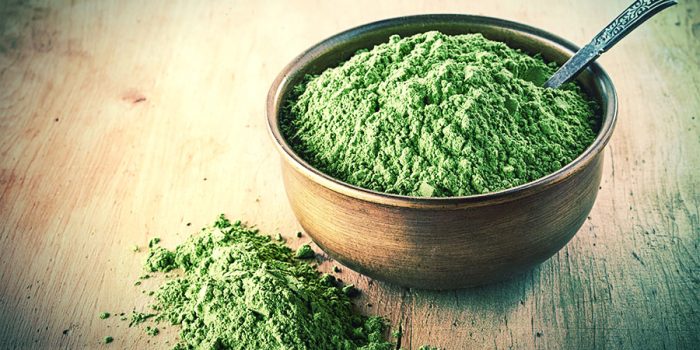
Kratom has only hit the scene among Western consumers within the past few years. If you haven’t jumped on board with this trend yet, now’s the time.
Recent research has shown that Kratom doesn’t just have powerful stimulant or sedative effects. View more to learn about strains like Red Borneo and their anti-inflammatory properties. When used in the right doses, Kratom can also act as a natural nootropic. Plus, unlike pharmaceutical nootropics, it doesn’t produce a plethora of risks and unwanted side effects.
Want to find out how you can use Kratom to boost focus, motivation, and cognitive function? Read on to get started.
What Are Nootropics?
Initially, the term nootropic was only used to refer to a particular class of pharmaceutical drugs. Today, the term is more commonly used to describe any medication, herbal supplement, or synthesized chemical that benefits cognitive function.
Not all nootropics are created equal. Some work better than others. When it comes to pharmaceutical nootropics, some also produce potentially severe adverse effects.
The side effects of prescription nootropics like Phenibut, Armodafinil, Cerebrolysin, and others can include:
● Headaches
● Diarrhea
● Nasopharyngitis
● Insomnia
● Fatigue
● Tremors
● Myalgia
● Psychomotor agitation
● Dysphoria
● Dizziness
● Memory loss
● Motor function impairments
● Vertigo
● Hot flashes
● Many other uncomfortable or even dangerous problems
Most pharmaceutical nootropics are recently developed, and many have questionable safety profiles. On the other hand, Kratom is a natural substance used by people in Southeast Asia for centuries.
Why Kratom Is Better
You may have heard of Kratom as a natural tool for pain management. While it’s true that this herb produces impressive analgesic effects, that’s not all it does. In small doses, Kratom can help you feel more energized, increase your focus, and boost your cognitive function. For most people, it does all that without producing potentially dangerous side effects. Plus, Kratom has a centuries-long history of safe use, while newly developed nootropics do not.
Farmers in Southeast Asia have been using Kratom as a herbal nootropic for hundreds of years. They used to chew the leaves on long days of work to combat fatigue and keep focused. While these farmers may not have been thinking about Kratom in these terms, the herb helped boost their cognitive performance. You can benefit from those same kratom effects.
How It Works
The alkaloids found in kratom plants work on multiple systems in your brain. Most people know it binds to opioid receptors. However, it also binds to serotonin, dopamine, and adrenergic receptors. Regulating these natural brain chemicals’ production can help you improve your memory, focus, and more.
If you struggle with certain underlying conditions, you may be able to benefit even more than most people from Kratom. Problems like chronic pain, anxiety, and insomnia can all get in the way of normal brain functioning. The right strains of Kratom taken at the right doses can help with all those problems.
The small doses of Kratom required to boost cognitive function also help with anxiety. Moderate doses of Kratom can help you manage your pain so it won’t affect your mental performance. In larger doses, Kratom’s nootropic effects are less pronounced, but its alkaloids induce a deep state of relaxation. That can help you sleep at night, even after stressful days.
How to Use Kratom
If you’re new to Kratom, you’ll have to start by finding the right strains. White strains are some of the most nootropic kratom strains, while red strains produce more euphoria and sedation. Green and gold strains fall somewhere in between, sharing some characteristics with red and some with white vein kratom.
No matter which strain of Kratom you use, you’ll have a few options when it comes to administration. You can buy capsules, pure kratom powder, or tinctures. If you’re wondering, can you smoke Kratom? You can find the answer to your question on kratom krush. You can smoke Kratom, but it’s not a good idea. You’ll have much better luck using one of the ingestion methods described above.
Tips for Using Kratom
The most important thing to remember when using Kratom as a nootropic is to keep your doses small. Start with just one gram. If that doesn’t give you the mental boost you’re looking for, you’re slowly up to your dosage. Increase your kratom consumption by 0.5 grams per day until you’ve reached your optimal dose.
You may need to take more Kratom as you develop a tolerance to its alkaloids’ effects on your brain. Don’t worry. That’s normal. As long as you don’t use it more than once every 24 hours, your tolerance shouldn’t get problematically high. Keeping your doses low is also the best way to avoid unwanted side effects.
Are Nootropics Safe?
Nootropic drugs can produce unwanted side effects and medication interactions. For those with diagnosed mental conditions, they may be worth the risk. Average consumers are better off sticking to natural nootropics like Kratom when they want a mental boost.
Give Your Brain a Natural Boost
If you want to find out what Kratom can do, the only option is to give it a try. Just make sure you buy your Kratom from a reputable online vendor. It’s the only way to ensure both purity and potency.
